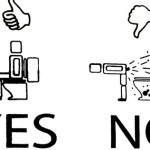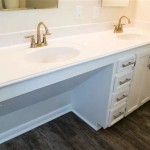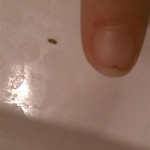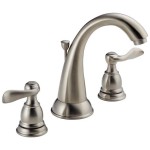Removing Delta Bathroom Sink Drain Covers: A Comprehensive Guide
Delta bathroom sink drain covers, while aesthetically pleasing and functional in preventing debris from entering the drainpipe, can occasionally require removal for cleaning, repair, or replacement. Understanding the mechanism of these drain covers and the correct procedures for removal is crucial to avoid damage to the sink, drain assembly, or plumbing. This article provides a detailed guide on various Delta bathroom sink drain cover types and the specific methods for their safe and effective removal.
The approach to removing a Delta bathroom sink drain cover largely depends on the type of drain assembly installed. Delta offers various drain designs, including pop-up drains, lift-rod drains, push-button drains (also known as touch-activated drains), and grid drains. Each design has a unique mechanism for securing the cover in place, necessitating a tailored removal technique. Incorrect methods can lead to stripped screws, damaged finishes, or even breakage of internal components.
Before commencing any removal process, it is crucial to identify the specific Delta drain assembly installed in the bathroom sink. This identification will inform the appropriate removal procedure and minimize the risk of complications. Furthermore, gathering the necessary tools, such as screwdrivers (Phillips and flathead), pliers, and potentially a basin wrench, is essential for a smooth and efficient process.
Identifying Your Delta Drain Type and Assessing the Situation
The first step in removing a Delta bathroom sink drain cover is accurately identifying the type of drain installed. A pop-up drain is characterized by a stopper that can be raised and lowered using a lift rod located behind the faucet. A lift-rod drain mechanism directly controls the stopper's movement through this rod. A push-button drain operates with a simple press to open and close the drain, using an internal spring-loaded mechanism. A grid drain, typical in sinks without overflow holes, features a fixed grid structure that prevents large objects from entering the drain.
Carefully examine the drain cover and the surrounding area for visible screws, levers, or push-button mechanisms. Note the material of the drain cover, as this can affect the tools and techniques used. Chrome finishes, for example, are susceptible to scratching and require more delicate handling. Additionally, assess the condition of the drain cover and surrounding area. Look for signs of corrosion, mineral buildup, or damage that may require special consideration during removal. If significant corrosion is present, penetrating oil may be necessary to loosen the components before attempting removal. Allowing the penetrating oil sufficient time to work, often several hours or even overnight, can significantly ease the process.
Prior to starting any physical intervention, it is advisable to take photographs of the drain assembly. These photographs serve as a reference point during reassembly, ensuring that all components are replaced correctly. Close-up photos of the drain cover, linkage, and any visible screws or clips will be invaluable when putting everything back together.
Removing Delta Pop-Up Drain Covers
Delta pop-up drains are one of the most common types of bathroom sink drains. Removing the drain cover typically involves disengaging the lift rod mechanism located beneath the sink. Begin by emptying the cabinet beneath the sink to provide ample workspace. Locate the pivot rod that connects the lift rod to the pop-up stopper. This pivot rod is usually attached to a clevis strap with a spring clip.
Detach the spring clip from the clevis strap. Once the spring clip is removed, the pivot rod can be carefully detached from the clevis strap. With the pivot rod disconnected, the pop-up stopper should be free to lift out from the top of the sink. However, sometimes the stopper may be stuck due to mineral buildup or debris. In such cases, gently rock the stopper back and forth while applying upward pressure. Avoid using excessive force, as this could damage the stopper or the drain assembly.
If the stopper remains stuck, consider using a lubricant like WD-40 or a specialized plumbing lubricant. Apply the lubricant around the base of the stopper where it meets the drain opening and allow it to penetrate for several minutes. Then, try rocking and lifting the stopper again. Once the stopper is removed, thoroughly clean it and the drain opening to remove any debris or mineral buildup. This will ensure a smooth operation when the stopper is reinstalled.
In some instances, the pop-up stopper may have a small screw securing it to the drain flange. This screw is usually located on the side of the stopper and is often hidden from view. Before attempting to lift the stopper, carefully inspect it for any visible screws. If a screw is present, use a small screwdriver to loosen and remove it. Keep the screw in a safe place, as it will be needed for reassembly. With the screw removed, the stopper should lift out easily.
Removing Delta Push-Button (Touch-Activated) Drain Covers
Delta push-button drain covers, also known as touch-activated drains, present a slightly different challenge compared to pop-up drains. These drain covers utilize an internal spring-loaded mechanism that can be more complex to access. The most common method for removing a push-button drain cover involves unscrewing it from the drain body.
Examine the drain cover for a visible screw or a small indentation. Some push-button drain covers have a small set screw located on the side, which needs to be loosened before the cover can be unscrewed. If a set screw is present, use a small Allen wrench or screwdriver to loosen it. Once the set screw is loosened, try unscrewing the drain cover counterclockwise. In many cases, the drain cover is threaded directly onto the drain body.
If the drain cover is difficult to unscrew, avoid using excessive force. Instead, try using a rubber strap wrench or a pair of pliers with a cloth wrapped around the drain cover to protect the finish. Apply gentle pressure and slowly turn the drain cover counterclockwise. If the cover remains stuck, apply penetrating oil around the base of the cover and allow it to penetrate for several minutes before attempting to unscrew it again.
Another type of push-button drain cover might require a different extraction method. Some models feature a twist-and-lift mechanism. This type requires the user to firmly press down and slightly twist the drain cover, usually counterclockwise, to release it from its locked position. Once released, the cover can be lifted straight out. Refer to the manufacturer’s instructions or online resources for specific guidance on this type of mechanism if unsure.
After removing the push-button drain cover, carefully inspect the internal mechanism for any signs of damage or wear. Clean the drain body and the removed cover thoroughly to remove any debris or mineral buildup. This will ensure proper function when the drain cover is reinstalled. Replacing the O-rings or rubber seals, if present, can also help prevent leaks and ensure a tight seal.
Removing Delta Grid Drain Covers
Delta grid drain covers are typically found in sinks without overflow holes. These drains have a fixed grid structure that prevents large objects from entering the drainpipe. Removing a grid drain cover is usually a straightforward process, as they are often held in place by friction or a simple screw.
Inspect the grid drain cover for any visible screws. Some grid drain covers have a small screw located in the center or on the side that secures it to the drain body. If a screw is present, use a screwdriver to remove it. Once the screw is removed, the grid drain cover should lift out easily. If there is no screw, the grid drain cover is likely held in place by friction. In this case, gently pry the cover up using a flathead screwdriver or a small prying tool. Be careful not to scratch the sink or damage the drain cover.
If the grid drain cover is stuck due to mineral buildup or debris, apply penetrating oil around the edges of the cover and allow it to penetrate for several minutes. Then, try prying the cover up again. Using a small hammer to gently tap the screwdriver or prying tool can also help to loosen the cover. Proceed with caution to avoid damaging the grid drain or the sink.
Once the grid drain cover is removed, thoroughly clean the drain opening and the cover to remove any debris or mineral buildup. Inspect the drain body for any signs of corrosion or damage. If necessary, use a wire brush or a plumbing snake to clean the drainpipe. Reinstall the grid drain cover, ensuring it is securely in place. If applicable, tighten the screw to secure the cover to the drain body.
Regardless of the drain type, remember to exercise patience and avoid using excessive force during the removal process. If encountering significant resistance, re-evaluate the situation and consider seeking professional assistance from a qualified plumber. Attempting to force a stuck drain cover can lead to damage to the drain assembly, sink, or surrounding plumbing, potentially resulting in costly repairs.

How To Remove A Bathroom Sink Stopper Take Out Pop Up Drain From

How To Remove A Delta Bathroom Sink Pop Up Stopper Hunker

How To Fix A Leaky Delta Two Handle Faucet

Delta Bathroom Sink Metal Pop Up Assembly In Chrome Rp5651 The Home Depot

How Replace A Bathroom Sink Drain

Simple Ways To Fix A Leaky Delta Bathroom Sink Faucet

Stopper Assembly In Matte Black Rp16686bl Delta Faucet

Delta 2 1 8 In X 32 Plastic Bathroom Sink Pop Up Stopper Chrome Rp5648 3 The Home Depot

Simple Ways To Fix A Leaky Delta Bathroom Sink Faucet

Delta Sink Drains Stoppers At Com
Related Posts







